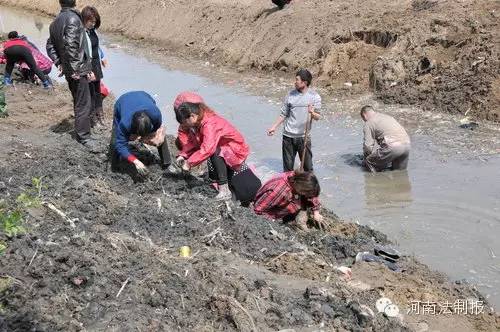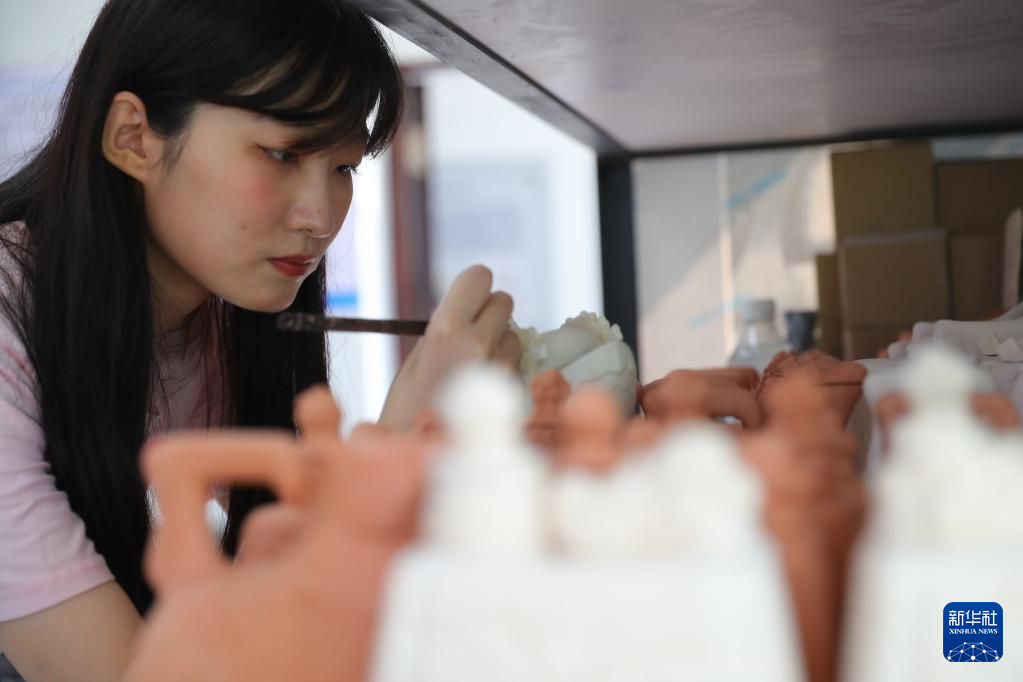Who did the cultural relics that were discovered by a bronze coin at the construction site of Jiangs
Author:Henan Legal Daily Time:2022.06.08

The case played back
On the morning of March 21, on the construction site of a cleaning river in Longgang Town, Yandu District, Yandu City, Jiangsu After heap, many villagers around them came to dig out \"Taobao\" after hearing the news. Many people scrambled to pick up treasures in the sand in the sand, and many bronze coins were scattered into the hands of the villagers. According to incomplete statistics, the digging copper coins weighed two or three hundred pounds. After the museum archeologists arrived at the scene, they found that copper coins were ancient coins during the Tang and Song dynasties, which belonged to cultural relics, so they contacted the local police station to protect the scene in time. After preliminary research, these ancient coins are mainly Tang and Song dynasties. They belong to the coin cellar. They are probably buried underground in the early years of the Southern Song Dynasty. Submit time to avoid losses to the country.

The copper coins in the river belong to the country's all
Lawyer Wang Defu, Qiannuo Law Firm, said that cultural relics are human cultural relics that are reliced \u200b\u200bin society or buried underground underground , Including cultural sites, tombs, architecture and monuments with historical, artistic and scientific values; precious art, arts and crafts, and daily necessities in each era; important documents and manuscripts, old books with historical materials; reflecting each era; reflecting each era Representative physical objects of social systems, social production, and social life. Article 5 of the Cultural Relics Protection Law of the People's Republic of China: All cultural relics in the underground, internal water and collar sea in the territory of the People's Republic of China belong to the country. Ancient cultural sites, ancient tombs, and grottoes are owned by the country. At the same time, according to Article 93 of the Supreme Court's \"Opinions on the Implementation of Civil Laws (Trial)\", except that \"citizens and legal persons can prove that they are all of them, if they can prove that they can be proved to all of them, they shall be given by them. In addition, the \"all cultural relics of the underground, internal water and collar sea in the territory of the People's Republic of China belong to the country.\" Therefore, any unit or individual finds the cultural relics, and the local cultural relics administrative department should be protected at the scene. If the cultural relics discovered are owned by the state, no unit or individual may be grabbed, privately divided, or hidden. The coins in this case cannot prove their ownership. They should be identified as state cultural relics in accordance with the law. State -owned cultural relics collection units perform their duties such as archaeological investigations, mining, research, and display of cultural relics in accordance with the law.

Lawyer Wang Defu said that the cultural relics of the state that the individual citizens should be handed in should be handed over. \"If it does not constitute a crime, the cultural relics authorities of the people's government at or above the county level will recover cultural relics with the public security organs; if the circumstances are serious, it will be fined 5,000 yuan to 50,000 yuan.\"
The villagers in this case gathered togetherThe behavior of grabbing coins is illegal. If the circumstances are serious, it may constitute a crime. The Supreme Law \"Explanation on the Specific Applied Laws of theft, illegal operation and smuggling of cultural relics in the Supreme Law stipulates that any unit or individual, for construction, construction 2. The cultural relics unearthed in production are robbed or privately divided, and privately left, and the participants are subject to the crime of grabbing or theft; they may be sentenced to three years of imprisonment, detention, and control. Punishment, but the cultural relics must be recovered, and the cultural relics department must be sent. Cultural relics are different from ordinary property. It is different from the object of gathered crime stipulated in Article 268 of the Criminal Law. Villagers should pay the illegal coins in accordance with the law, assist in the protection site of the relevant cultural relics departments, and avoid losing cultural relics.

The accelerated pace of urban construction and the expansion of people's life circle are important reasons that have repeatedly discovered cultural relics sites, so that these cultural relics will be \"re -see\". Lawyer Wang Defu believes that how to avoid the grabbing after the cultural relics are discovered, the key lies in the rewards and penalties of cultural relic discoverers. For the discovery of the cultural relics to report or submit it in time, the General Principles of the Civil Law stipulates: \"Give praise or material rewards.\" The \"Cultural Relics Law\" also mentioned that \"the state gives spiritual encouragement or material rewards\", but there is no regard to the reward criteria Specific regulations. It can be seen from the previous incidents that can be seen that the award is less and the prizes are fine. It is still prominent. The reward of 500 yuan in Shaanxi's bronze sword cultural relics claim that the knife rack is not handed over on the neck. This has caused some people who have a weak meaning of the law of cultural relics, driven by the interests and know the criminals. Relevant departments should consider further improving the reward mechanism of handing in cultural relics and to promote the extensive to promote cultural relics to actively act in accordance with the law. On the other hand, the public security and cultural relics departments have increased their enforcement efforts, and they must investigate the illegal of robbers to avoid cultural relics.

early March 2010
During the construction of the Han and Tang dynasties during the construction site of the southern station of Gongyi City, Gongyi City, Henan Province, some villagers nearby were not only Without reporting to the cultural relics department, he also took the opportunity to grab cultural relics. After investigation, 36 cultural relics were recovered after investigation, all of which were pottery during the Han and Tang Dynasty, and 2 of them were national three -level cultural relics.
September 2010
Ancient tomb group was found while building roads near Buwang Village, Xinshi Town, Linwei District, Xi'an. The villagers coaxed the cultural relics dug out during the construction process, and many villagers even mining cultural relics such as iron crickets. The ancient tomb group was identified as the Yangshao period and the cultural relics of the Han Dynasty.
April 2012
The worker Li led more than 20 workers to use a hook machine to dig out the foundation site in Shizhengxianju New Rural Construction site in Xisong Road, Xixiaong Road, Dengfeng City, Henan Province. Dig in two ancient tombs. Seeing cultural relics in the tomb, Li did not report to the cultural relics department, but instructed the four workers to steal, And to rob the dug out of the cultural relics.Many cultural relics were destroyed due to no excavation experience.
September 2013
After the construction of Xiping County, Xingxian County, Xiping, Xiping, Henan, after the construction of Xiping County, the local villagers found a large number of ancient copper coins in the dug soil.Hundreds of villagers in several villages nearby have gone, and some even have a small family. They went to dig for treasure overnight. The villagers of the department sold the copper coins.
In November 2014
In the construction site of Hubin North Road, Huangtang Village, Baishuihu, Baishuihu Lake, Nanchang City, Jiangxi Province, the excavator dug the tomb during construction, and was immediately affected by the construction.The grabbing of people nearby.Witnesses say that the suspected ancient swords and other cultural relics in the tomb are snatched.

- END -

